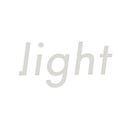The P1 Production Prototypes
The first batch of Light Phones.
This is a video of our very first prototypes using all of our custom designed internals. They were built by hand by our engineers in Taiwan, and although they are not up to manufacturing quality, it’s amazing to hold and play with a Light Phone. The purpose of this prototype was to test the internals, so cosmetically a lot will improve.
The Guts of the Phone
The Light Phone is a completely custom phone, we’ve had to develop pretty much every single part from scratch specifically for this device. It’s been about 6 months of full time engineering with a team of almost 60 to ensure that everything could come together in this particular form factor and with the quality we required. It is truly beautiful! The PCB board is a work of art, it’s easy to take this for granted in the technology that we use everyday. Together there were over 30 different companies and a thousand people involved to get all of these parts perfected and produced. We want to extend a very special thank you to everyone who has touched the Light Phone at all during its development. We are proud to have your support in bringing this to life. The internals of the phone work great.
Problems With The Casing
We touched upon the difficulty in trying to get the lights to shine clearly through the casing. Although we successfully made our injection tools as thin as we imagined, we found ourselves running into a critical issue with the light not being able to penetrate through the casing and its white UV paint making the interface blurry. This has been something we knew we wouldn’t be able to really dive into until this stage of production.
We went to Foxconn’s R&D center in Taiwan and worked with our team for almost an entire month to troubleshoot and experiment ways to optimize the lighting, and we are excited with what we’ve come out with together.
It takes a tremendous amount of time and resources for us to go through this experimentation process. For starters, access to a proper prototyping booth and lab for painting is expensive and reservations are quite competitive. Each attempt at a new recipe of paint can easily take up to 5 hours. The lab engineer needs to mix the paint to the most precise standards, the material then needs to be heated before applying the paint, and finally it needs a few hours curing with UV lighting. On good days we were able to try 2 or 3 different combinations of paint recipes. In total we tried over 30 combinations of paint, and with each combination we also tested various densities and gloss levels, exploring pretty much every possible configuration.
Introducing Glass
After a little over 3 weeks of anxiously going through combinations of paints, we also started exploring the option of glass. The glass was immediately impressive and we are proud to say we found our secret sauce. We are going to need to make some structural changes to accommodate the new design, but we are really excited about this new direction and think we have made the product significantly better. The glass is extremely durable, and it feels great to the touch. It is a huge step forward.

